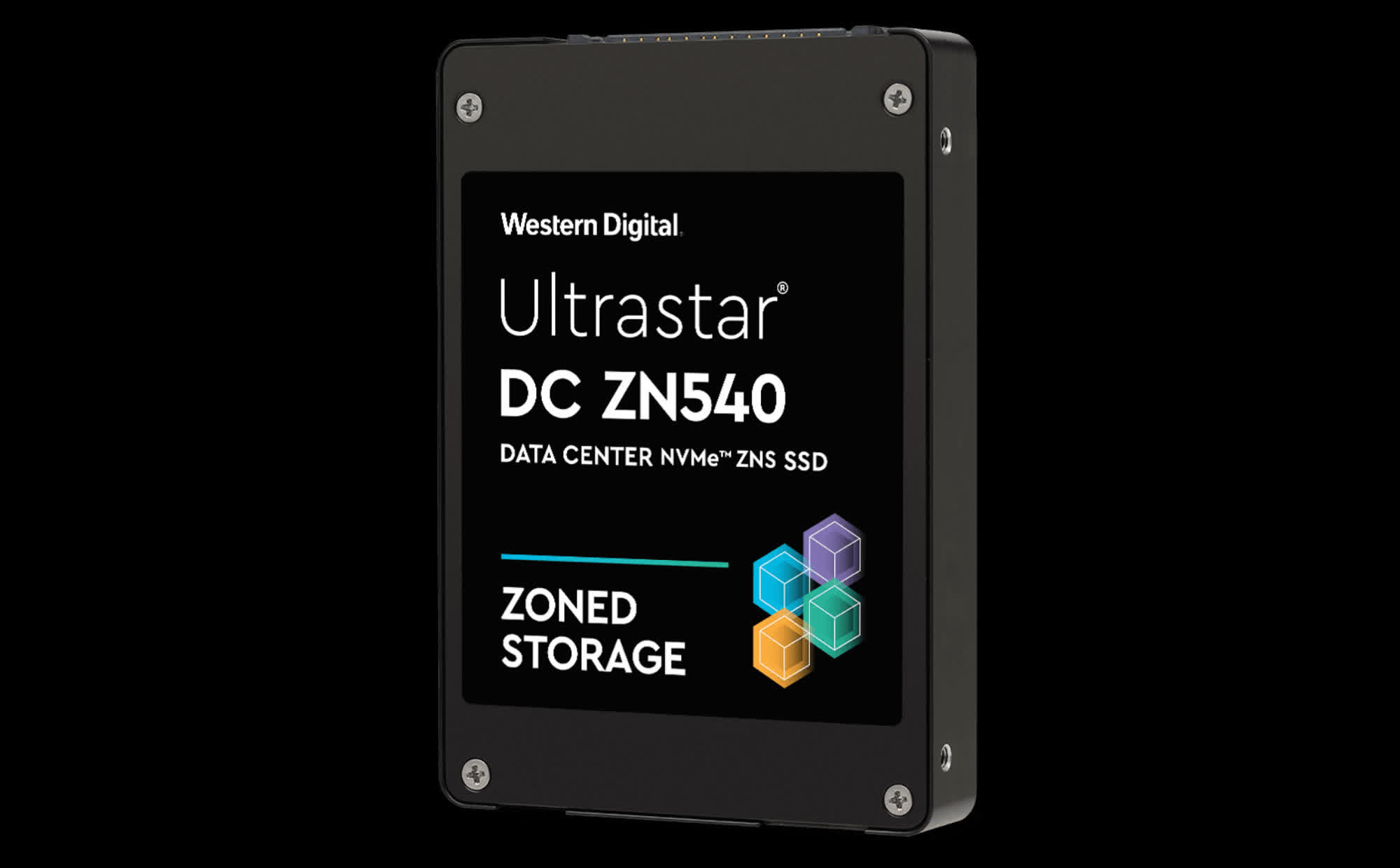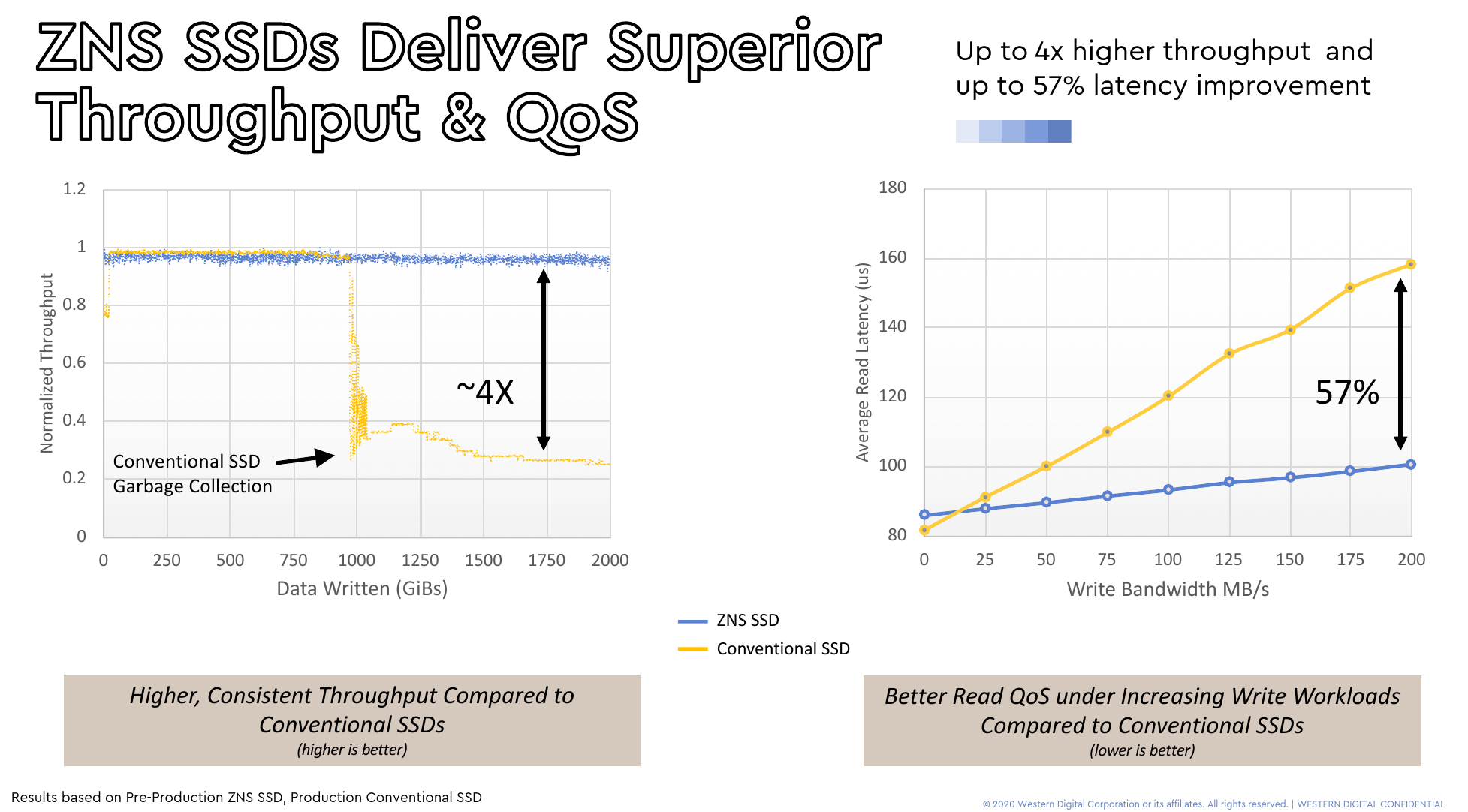In brief: As we prepare to enter the zettabyte era, manufacturers such as Western Digital are getting creative with new ways to improve SSD technology. The company's first ZNS SSD promises to make a real difference in performance and cost for hyperscalers that tackle cloud, analytics, and machine learning.

Once an expensive luxury that came in smaller capacities, SSDs have become commonplace in modern PCs thanks to ever decreasing prices per gigabyte. Their speed has been a selling point for high end systems, from business PCs to workstations and now consoles that leverage flash storage to allow developers to create larger, more complex game worlds.
The first generations of consumer SSDs originally didn't exploit the full potential of flash technology as they used existing HDD interfaces which were relatively limited in terms of bandwidth and used a different communication protocol that was optimized for spinning magnetic storage. The problem was partly solved with the introduction of PCIe SSD drives in 2007 and the NVMe protocol in 2011, and today we have consumer drives capable of incredible speeds in excess of 7,000 megabytes per second.
However, these two technologies aren't enough to exploit the parallelized I/O architecture of flash storage for the lowest possible latency and ensure increased endurance in multi-level cells used to make high capacity SSDs. And these limitations are particularly important in data centers, where latency and total cost of ownership are key concerns.
This is where the Zoned Namespaces Storage (ZNS) initiative comes in. A ZNS SSD borrows the software stack from SMR HDDs and places data sequentially into zones, which reduces write amplification as well as the percentage of the raw capacity that needs to be reserved for the purpose of over provisioning. This way, you can use more of the raw capacity of the drive, leading to savings that quickly add up when you need to purchase a large number of drives.
Another advantage of this approach is that since ZNS operates with large zones instead of 4K blocks, it doesn't need to perform a lot of background garbage collection when compared to traditional solid state storage. This means that real-world read and write speeds are more consistent, and since data handling and management is done by the host, there's less need for a large DRAM cache on the device.
This week, Western Digital -- one of the big proponents of ZNS -- revealed the Ultrastar DC ZN540, which is the first drive that encompasses these principles into an actual product. The company says that a single Ultrastar DC ZN540 drive can replace up to four conventional SSDs while providing lower latencies, higher throughput, and better endurance.

The new SSD uses 96-layer 3D QLC NAND memory and a custom dual-port NVMe 1.3c-compliant controller that fully supports the ZNS Command Set 1.0 specification. This is an enterprise SSD that comes in a U.2 form-factor as a drop-in replacement for drives in existing servers. It uses the same software stack as shingled magnetic recording (SMR) HDDs, but the key here is that Western Digital wants to prove that QLC NAND can reliably be used in the data center while lowering the total cost of ownership when compared to existing solutions.
The company claims the Ultrastar DC ZN540 is capable of 4x the throughput of conventional SSDs, with up to a 57 percent improvement in latency when tackling write-heavy workloads. In testing against a real-world application environment like RocksDB, the new drive delivered 2.5x lower latencies while running 32 random read threads of key-value pairs. And these improvements are also coming to other databases like MySQL.
For now, ZNS is limited to enterprise SSDs like the Ultrastar DC ZN540, which is only available to a few select customers of Western Digital. However, the improvements brought by the new approach don't require manufacturers to make any changes to current SSD controllers, which means they could be implemented with firmware changes on existing drives as well.
https://www.techspot.com/news/87562-western-digital-unveils-ultrastar-dc-zn540-world-first.html